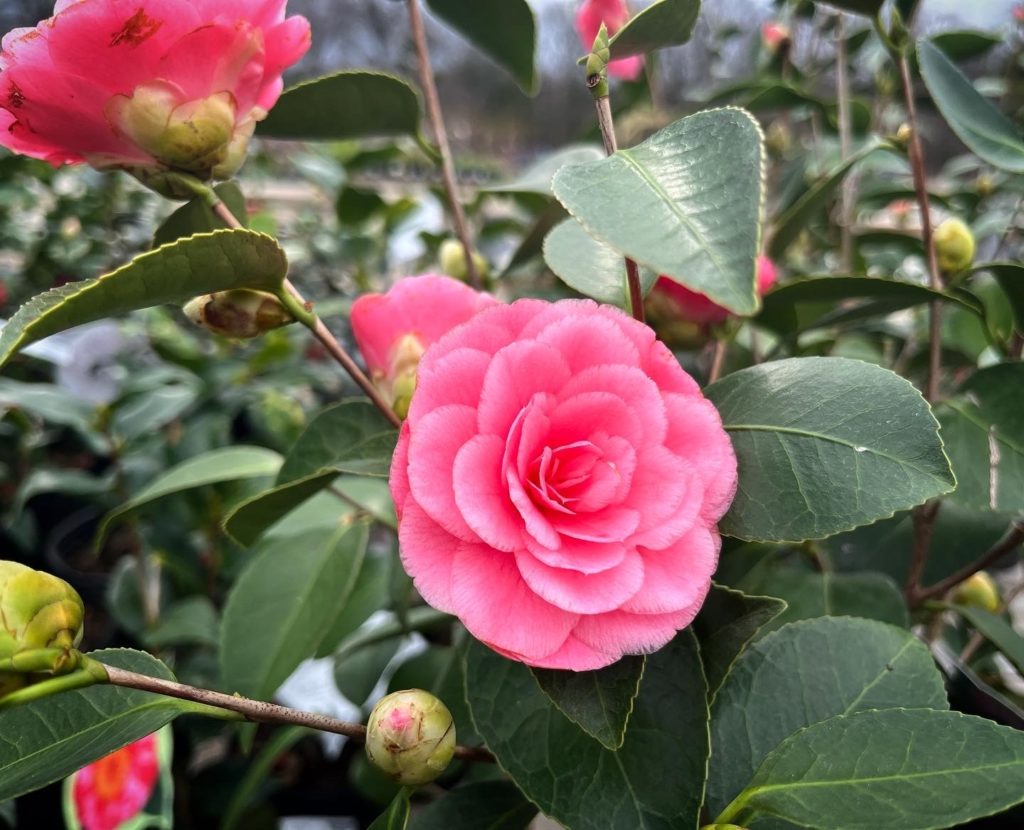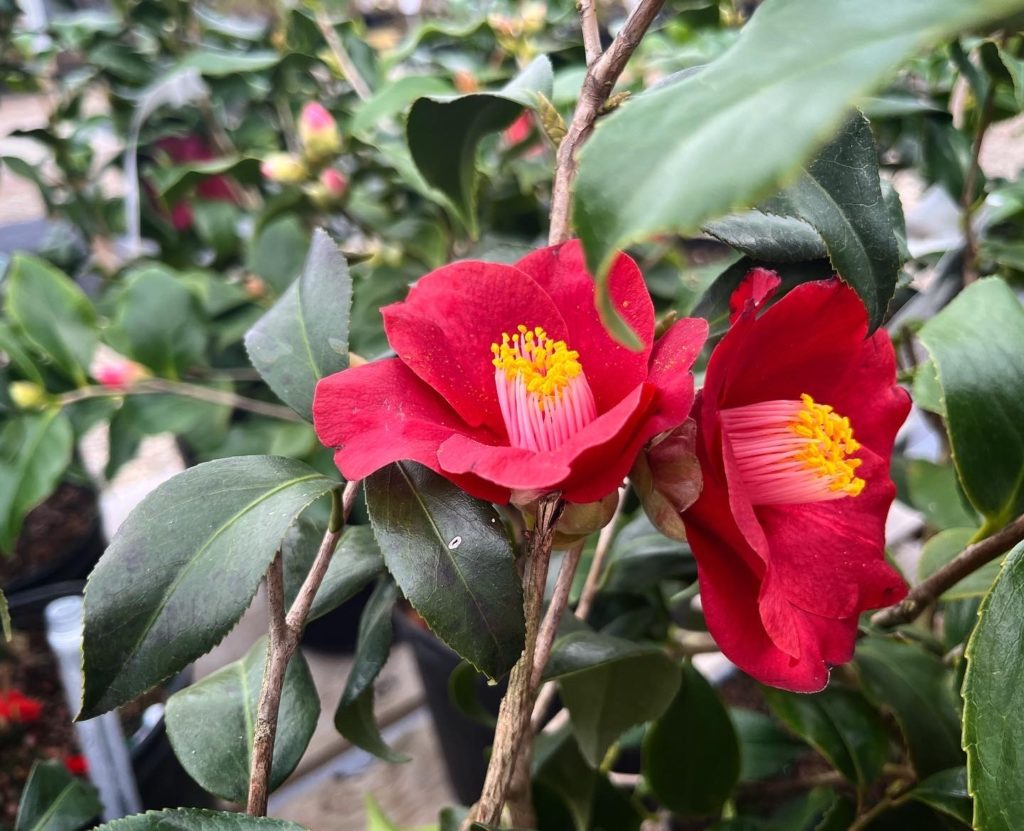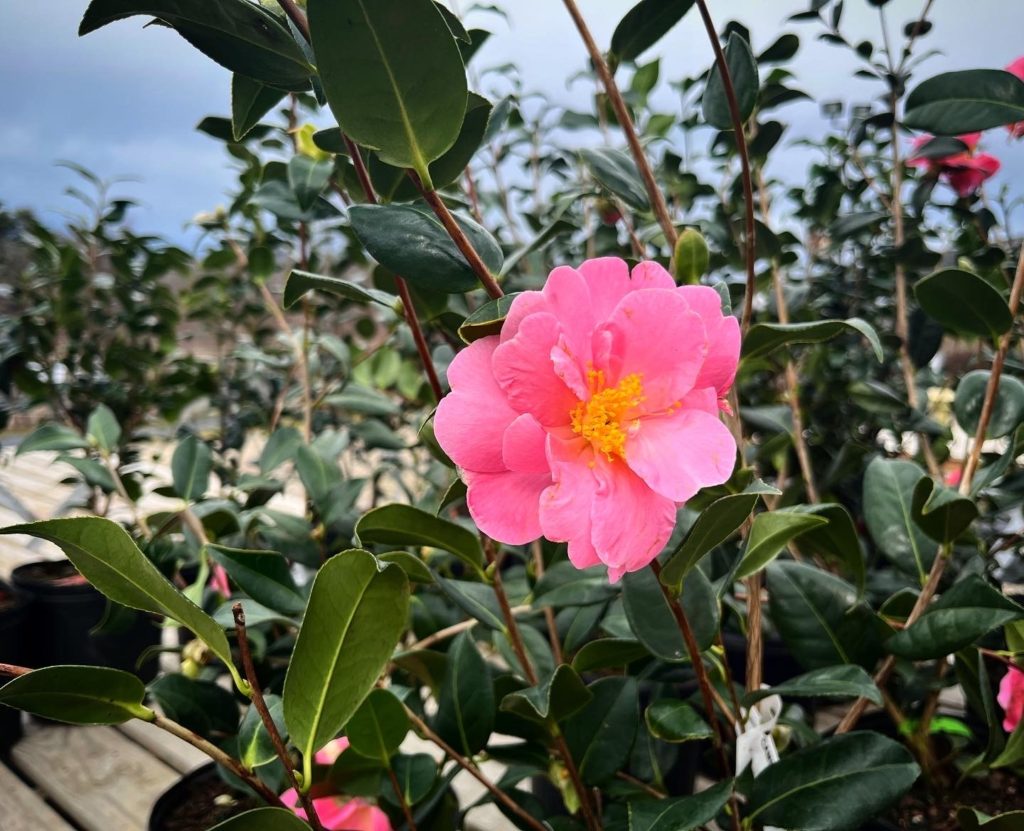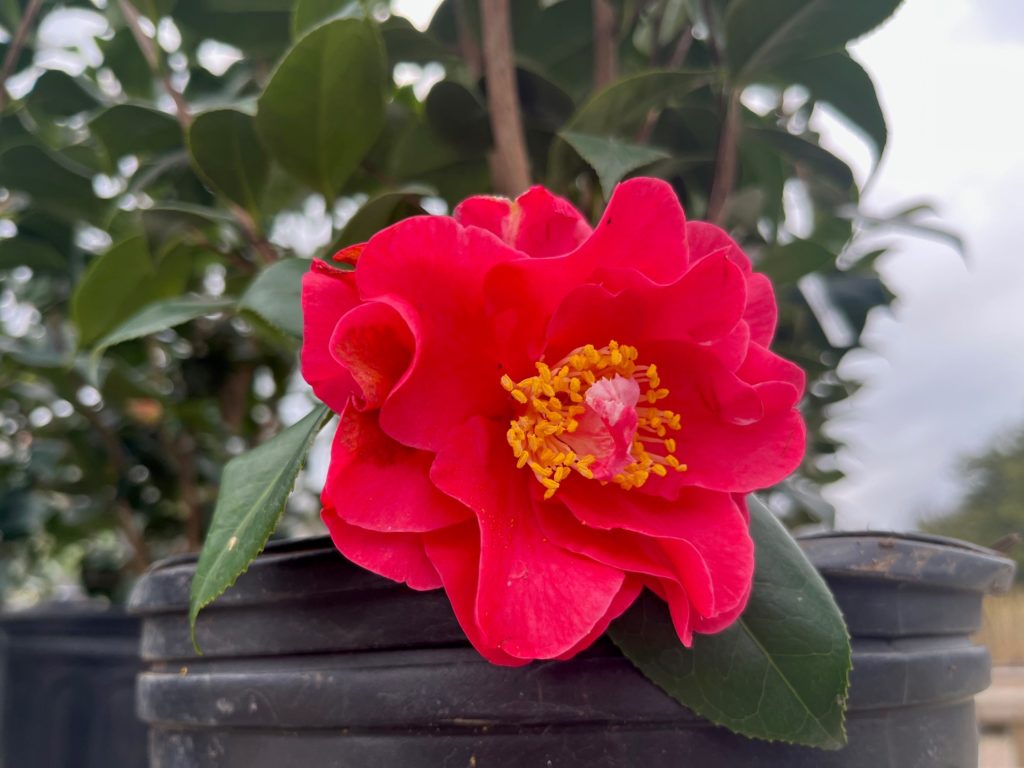
Crazy About Camellias
Just before many spring-flowering plants put forth their long-awaited display of color… Camellia japonica beats them to the punch with glorious early seasonal blooms. And speaking of their glorious blooms – look for varieties that offer single, semi-double, double or peony-like in pure white or shades of pinks, reds, and two-toned. So many to choose from, you might need a few camellias in your landscape to satisfy your early spring cravings for color!

Considered one of the ‘old standards’ in southern gardens, Long Islanders can enjoy Japanese camellias in their gardens, too! For best results, plant in a sheltered, protected location that affords partial shade from intense sun. Japanese camellias are well suited for planting around foundations, borders, fences, and walls. You can grow smaller varieties in planters, providing that the planters can remain outdoors all year round and there’s adequate room for soil. Be sure to read the label of the chosen variety for height and width, and then locate in the landscape accordingly.

You will be rewarded with healthy, happy camellias if you spend time preparing the soil before planting. A soil that is moist, yet well drained; acidic (have the pH tested); and abundant with organic matter is ideal. Most soils need and will benefit from added compost or composted manure, so don’t skimp on soil amendments prior to planting.

It has been said that if you can grow rhododendrons, then you can grow camellias. Helpful tips for growing Japanese camellias: avoid planting too deeply; the top of the root ball should be level with the surrounding soil. And don’t be afraid to loosen or ‘tease out’ the roots when you remove the plant from the container. Doing so encourages the roots to establish in its new home. A word about water – maintain adequate soil moisture throughout the growing season. Pay attention to possible summer droughts and water as needed; never allow the soil to go bone dry. (And never let the plant ‘sit’ in water!) Due to their shallow roots, two inches of mulch should be applied over the planting area (but not against the trunk of the plant) to help retain needed soil moisture. A little extra TLC during the winter months can go a long way to protecting those beautiful spring-blooming buds. Consider wrapping plants, especially if in exposed locations, with burlap. In addition, they require little, if any, pruning. If you need to prune, it’s best to do so right after flowering.

